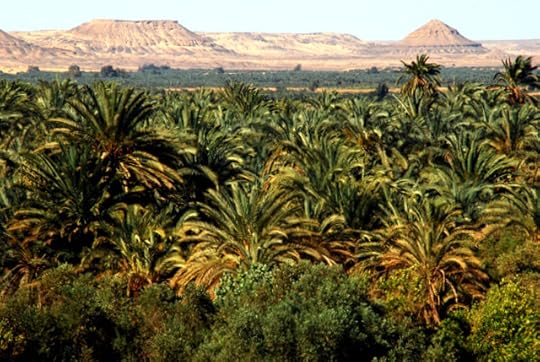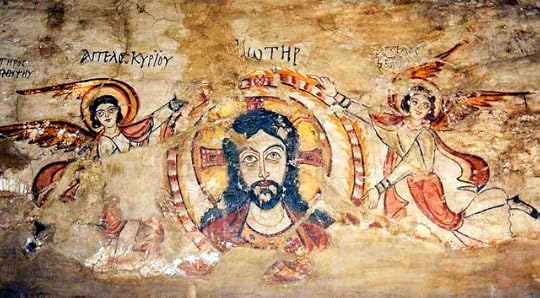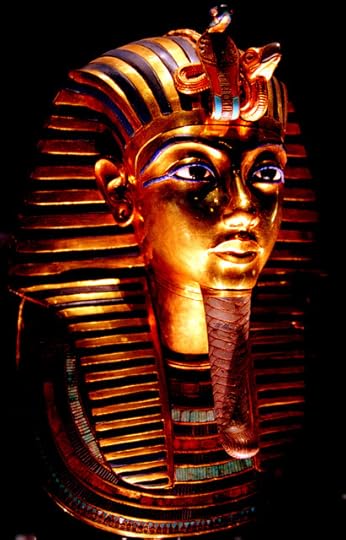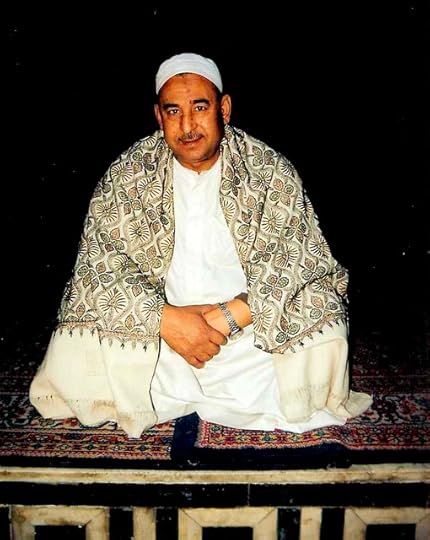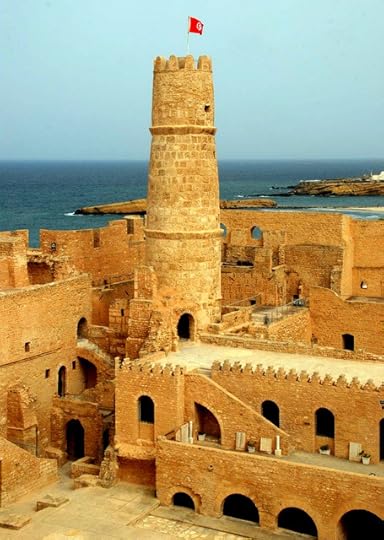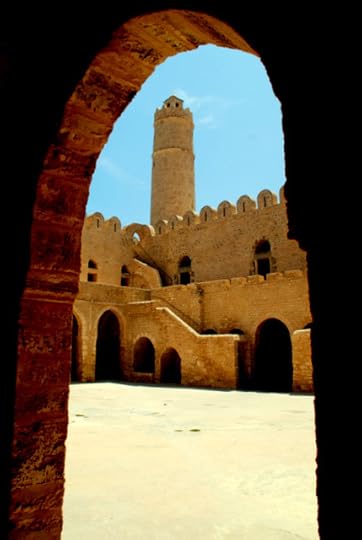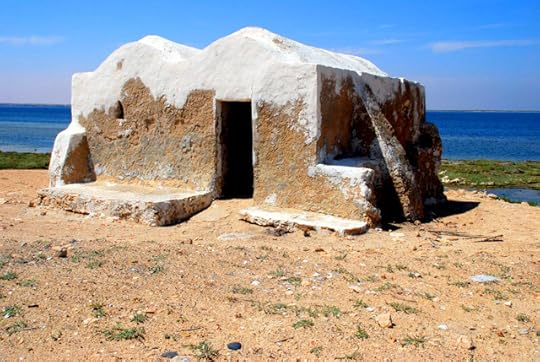Roderick Phillips's Blog, page 8
May 7, 2014
Bahariya Oasis, Western desert, Day 282
Hamada the co-owner of the Canadian hostel in Cairo is desperate to organize our Egyptian adventures beyond the capital. Trouble is his prices are too high, especially considering he is catering to a backpacker clientele. Christi and I are toying with the idea of cruising down the Nile from Luxor to Aswan if we can find a bargain. And of course the rule of thumb is that the best deals are always found locally – in this case Luxor. If Hamada arranges something for us then he’s adding his commission onto the fees charged in Luxor. We pass on this and plan on finding a fixer in Luxor to organize a high-end cruise for a low-end price. In the meantime we do allow Hamada to organize a true backpacker trip for us out to the Bahariya oasis in Egypt’s Western desert (yes it’s another trip into the Sahara). The Bahariya oasis is the jumping off point for some quite amazing rock formations: the Black desert and the White desert. As an added thrill we also get to camp in the Sahara – again. Apparently there is no five-star hotel in this part of the Sahara desert (and certainly not a five-star hotel offering rooms at backpacker prices), but we are promised a tent this time. And for a little extra cold hard cash we get to go backpacker first class. We’re still taking a public bus from Cairo to the oasis, but thereafter the program is private: just us and the tour guide.
It’s a six-hour slog from Cairo to Bahariya on the bus and we arrive in the intense heat of the day. The local agent, Amir, who actually runs the trips immediately wants to change the program. This is the first excursion I’ve been on where the Arab tour guide wants to change something. And you can bet your bottom dollar it will not be to our advantage. It isn’t. Amir wants us to join another tour leaving for the desert immediately. After 6 hours on an uncomfortable bus the last thing I want is another long drive followed by a night under canvas. And even though we’ve paid premium prices for a private tour, Amir tries to argue that more people make for a better experience! Nothing doing pal. Reluctantly he agrees to honor the original program. And for the rest of the day this involves a tour of the oasis. Amir promises to send a local guide to show us around, only he doesn’t show. After 2 frustrating hours in reception I insist the staff call Amir. First he says the drivers’ mother was in a car accident and the driver had to go to the hospital. Later he says the driver did show up on time, but we were not at the hotel. What lies. When the tour does eventually take place, the atmosphere is quite unpleasant and Christi and I don’t really enjoy it. Some of the scenery is quite pretty, though, including the oasis itself, the obligatory camels, and the desert at sunset. I only hope tomorrow goes better, although I have my doubts.
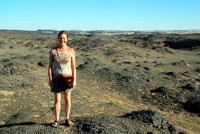
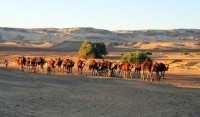
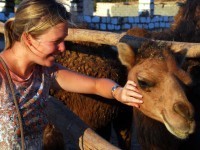
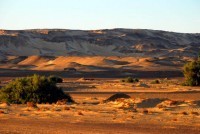
Blog post by Roderick Phillips, author of Weary Heart – a gut-wrenching tale of love and test tubes.
The post Bahariya Oasis, Western desert, Day 282 appeared first on Roderick Phillips.
May 6, 2014
Coptic Cairo, Day 281
Today is a big day. It will define the rest of our Year of Wonder. Over the last few days I have been e-mailing Midhat Mahir, our possible Sudanese fixer. Amazingly he is currently in Cairo and wants to meet tonight to discuss our ‘case’. I have no idea whether he will be able to get visas for us or quite how he will do this. One thing is for damn sure, though, Christi and I are not sending our passports to Khartoum (capital of Sudan). In the meantime with a day to kill, Christi and I decide to explore Coptic Cairo, which is located in the oldest part of the city. Indeed before the rise of Islam, christianity was the predominant religion in Egypt. We even take the local subway system to Mar Girgis station. And when we return to the sunlight we are suddenly surrounded by monasteries and churches. Apparently 9% of the population still identify themselves as Coptic Christians. Perhaps the two most impressive sites here are the Coptic museum and the Hanging Church.
We begin at Saint Virgin Mary’s Coptic Orthodox church (also known as the Hanging Church), which is one of the oldest churches in Egypt dating to at least the 6th century AD. It is also the most famous Coptic christian church in Cairo. The interior of the church in particular is very atmospheric, featuring some beautiful barrel-vaulted ceilings, paintings, wood paneling inlaid with ivory, and stained glass windows. The richly carved wood detail is sublime.
Before we visit the Coptic museum, we stumble across what must be the largest, glitziest souvenir shop in Cairo. This is a temple to the third main religion in Egypt: consumerism – or at the very least encouraging tourists to part with their cash in return for some quite seriously tacky souvenirs. Perhaps even more so than Morocco, Egypt’s economy is dependent on tourism and no souvenir is deemed too crass: from canopic jars to names written in hieroglyphs on papyrus and pyramid paper weights, the choices are endless and rather sad. And quite what I’m going to do with my canopic jars, papyrus hieroglyphs, and miniature Tutankhamun Death Mask is unclear. I didn’t even want them in the first place, but somehow I’m now their proud owner!
Next up is the Coptic museum of Cairo, dating to 1910. It houses the largest collection of Egyptian Christian artifacts in the world. The museum traces the history of Christianity in Egypt from its beginnings to the present day. The artefacts are just magnificent and the docents are quite happy to turn a blind eye and allow you to photograph away to your heart’s content as long as they receive a sizeable ‘backsheesh’. There are icons, stone carving, stained glass windows, frescos, textiles, manuscripts, carved wooden pieces, and instruments of war. The list is endless.
And now the time has come to meet with Midhat Mahir. He suggests the KFC off Tahrir Square. He’s 90 minutes late, but such is our desperation, Christi and I wait (but don’t nibble on any desiccated chicken mummies this time). He apologises profusely, but I get the sense he is completely ambivalent to our needs. He escorts down a few alleyways to a tea shop he knows and orders on our behalf. He explains his plan. Sudan is a very poor country. Nothing happens in government without speed money. The more money you are willing to pay the more quickly the task is completed. And while Americans are not actively encourage to visit Sudan, the lowly official in Khartoum who Midhat intends to bribe doesn’t care who gains access. And with official visas, immigration checks at the border will be a mere formality. The question is how does Midhat propose to get visas stamped in our passports without sending them to Khartoum. The answer is that we are not purchasing visas, but official permission to travel through the Sudan. With this paperwork, the visas will be issued without question at either the consulate in Aswan or at immigration control in Wadi Halfa. Guaranteed. Not quite what I was expecting and the bribe is extortionate in itself: US$320 in cash. Midhat does at least pay for the tea and the scans of our passports. And to be fair he also books our cabin on the Aswan – Wadi Halfa ferry. Midhat promises to e-mail our travel documents within a week. Midhat is also keen to organize a program for us while we are in Sudan. He is less than complimentary about the heat and transport woes in the country, including the fact that the train no longer runs between Wadi Halfa and Khartoum (that is disappointing). He has a Toyota Landcruiser with air-con and a driver (non-English speaking) that we could use. As usual with these private trips, the costs are high and the program, once agreed upon, is set in stone. We agree a tentative program, but refuse to hand over any more cash until we’re actually in Sudan. The future beckons, but not even the Coptic God in heaven knows exactly what that future will be.
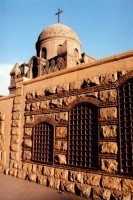
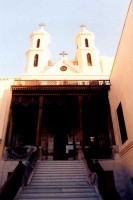
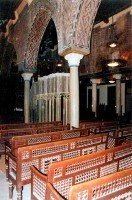
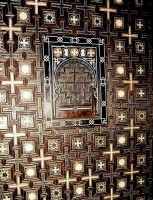
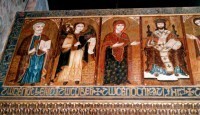
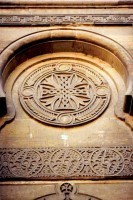
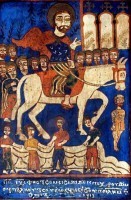
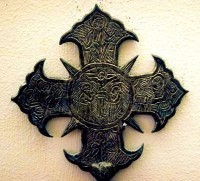
Blog post by Roderick Phillips, author of Weary Heart – a gut-wrenching tale of love and test tubes.
The post Coptic Cairo, Day 281 appeared first on Roderick Phillips.
May 5, 2014
The Egyptian Museum, Cairo, Day 280
In keeping with such vast edifices as the Louvre, British Museum, and Smithsonian Institute, the salmon pink Egyptian Museum (located in Tahrir Square) is a monstrous building. It is however beginning to show its age and is definitely a bit tatty around the edges. Despite its impressive size, there is insufficient space at the current site to showcase the plethora of historical artefacts collected from Pharaonic Egypt and a new state of the art facility is under construction near Giza. (Quite how the ongoing troubles have affected these plans is anyone’s guess, but eventually Tahrir Square should be free to focus on demonstrations and shaping the future of the country without having to worry about its rich heritage).
The Egyptian Museum is a seething mass of people. Even now, just as the museum opens, there are huge numbers of tourists and their tour guides. The one thing that Egypt has in abundance is tour guides. I’m sure they are very knowledgeable and their main goal is to share their love of Egyptian history with guests in their country. The reality is that they are an aggressive bunch, desperate to bag a tourist group. Christi and I are not much of a catch and to be honest we don’t want to be caught. The guides are most indignant that we shun their services, but my capacity for understanding several thousand years worth of history in a couple of hours is limited. Therefore we resort to our trusty Lonely Planet guidebook to Egypt and follow their highlights tour. (By the way, if anyone from Lonely Planet is reading this blog then feel free to make a donation for our next trip – which might be awhile, actually, as we wait for Alexander [our son] to get a little better at traveling).
We begin with the mummy room, which displays 11 desiccated bodies. Staring at the remains of these people that lived thousands of years ago is simultaneously beguiling and a little creepy. The two most impressive are Seqenre Taa and Ramses II (Ramses the Great). Seqenre Taa was a pharaoh of the 17th dynasty and what’s most disturbing about this guy is that his face and fingers appear contorted in pain – as if he was mummified alive. Ramses II of the 19th dynasty – perhaps the mightiest of all pharaohs partly because, remarkably, he lived well into his 90s. His body is in amazing shape; there are tufts of red hair, teeth, and mummified skin visible. I could easily imagine this guy opening his eyes and saying hello he looks so life-like. Of course if that happened we might have to bring in Brendan Fraser to coax him back to sleep again.
Next up is the famous statue of Rahotep (brother of the pharaoh Cheops) and his wife Nofret dates to the 26th century BC (4th dynasty of the Old Kingdom to be entirely accurate). It is in immaculate condition because like the treasures of Tutankhamun (which only dates to the 14th century BC [18th dynasty of the New Kingdom for those who can't get enough Egyptology]) they were not pillaged in antiquity but survived intact until the modern era. Even older than the Rahotep and Nofret statue is the Narmer Palette which dates to the 3200 BC. Yet again this stone tablet is in pristine condition. This piece has great historical significance because it depicts the Pharaoh Narmer wearing the crowns of both Upper and Lower Egypt indicating that he had unified the country and set the scene for 3,000 years and 30 dynasties of Pharaonic rule.
And so to the most impressive artefacts of all: the funerary treasures of Tutankhamun. He was not much of a pharaoh by all accounts, perhaps because he died young (or was murdered). He is of course the most famous because of the treasures found in tomb by Egyptologist, Howard Carter, in 1922. So the story goes, when Carter opened the tomb he found a ramshackle collection of artefacts that suggest the tomb was completed in a hurry during the mummification process. The most famous piece is the Death Mask. It is made of beaten gold, weighs 11 kg and was placed over the bandaged head of the dead pharaoh. The mask is a portrait of the boy-king so that his ‘Ba’ (or soul) could recognize him in the afterlife. The mask of Tutankhamun features the nemes head dress, pleated false beard, and broad collar, while the two protector goddesses of Upper and Lower Egypt (a vulture and cobra respectively) are perched on his brow. The funerary treasures of Tutankhamun are varied and impressive, including his gold coffin (which weighs 100 kg) and lots of jewelry plus the canopic jars containing the pharoah’s lungs, liver, intestines, and stomach which he would need in the afterlife.
The Egyptian Museum is very impressive, but the huge number of people and myriad facts and figures means my interest wanes after a few hours and I persuade Christi to forsake McDonald’s in favor of a KFC lunch. Unfortunately the dessicated chicken wings I’m given remind me way too much of the mummy of Ramses II.
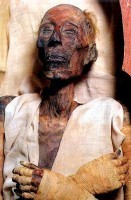
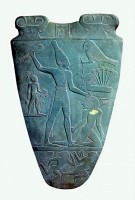
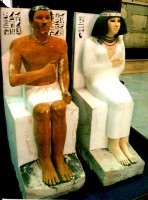
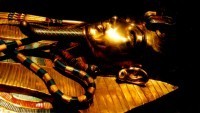
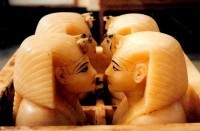
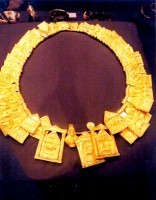
Blog post by Roderick Phillips, author of Weary Heart – a gut-wrenching tale of love and test tubes.
The post The Egyptian Museum, Cairo, Day 280 appeared first on Roderick Phillips.
May 4, 2014
Faces of Egypt, Day 279
Our room at the Canadian hostel is absolutely enormous and comes with air-conditioning (Cairo is a hot city), although the 150 Egyptian Pound room rate (US$27) does not get you an en-suite bathroom. The staff, however, are especially nice and help us plan our trip out to the Sahara (the Western Desert as it is known locally) and onward through Egypt. Having said that, the staff cannot get their heads around the fact that we will not need return transport. ‘Where will you go?’ I’m asked incredulously. ‘The Sudan,’ I reply. The staff look completely befuddled and bewildered. ‘Why?’ they ask finally.
That is a long story and one we will leave for another day. The point is though – can we even do it? The online research I’ve done since we’ve been in Africa would tend to suggest on the whole…no. At least the chances of Christi receiving a visa are slim, purely because she is an American citizen and Sudan and America are not on the friendliest of terms. The Sudanese embassies in Ethiopia and Kenya have on occasion been known to give out visas, but even that is unpredictable. A letter of introduction from a sponsor might work – the Bougainvillea guest house in Khartoum, the capital of Sudan, is often mentioned in this respect, but our inquiries are met with a polite refusal. We even talk to a visa agency in the US who say they need a letter of welcome from the Sudanese State Department in Khartoum; another useless lead.
Our plan is to travel overland through Egypt, take the ferry across man-made Lake Nasser and enter Sudan at Wadi Halfa. From we will continue our journey into the Heart of Darkness initially by crossing into Ethiopia. Another suggestion we see online that might help in securing a visa to Sudan is an exit strategy. Christi and I are clutching at straws, but we decide to apply for our Ethiopian visa before we subject ourselves to the vagaries of the Sudanese consular section.
Finding the Ethiopian embassy proves quite a challenge, but once we enter sovereign Ethiopian territory the process of applying for a visa itself is surprisingly easy. And unlike the Sudan, Ethiopia is very welcoming to US visitors. The cost is a mere US$30 per person and the visas will be ready in 24 hours. Emboldened by this positive news we hunt down the Sudanese embassy and ask what paperwork we might need to bring for the application. The consular official asks my nationality. ‘British,” I reply. He nods and then points at Christi, ‘And your wife?’ ‘She’s American,’ I say as casually as possible. A leer immediately plays around the guy’s mouth. He shakes his head, wags his finger and if he thought I wasn’t picking up on his negative body language adds, ‘No Americans.’ He then walks away without further explanation and just like that our dreams are in ruins.
We return dejected to our hostel and then try to make the best of our time in Cairo. Our hostel is centrally located near Tahrir Square and eventually we brave the labyrinthine subway system and suicidal roundabout to explore the square. (Back then it was not the focus of demonstrations and the Arab Spring and the locals were very friendly when they weren’t trying to run you over). We eventually find our way to Dr. Ragabs papyrus institute and look at a few papyrus souvenirs, but I have little enthusiasm for such things at the moment. In the center of Cairo you are never too far from the Nile river – and the Nile delta. The Nile is the key life-giving force to Egypt and Sudan and we had hoped to see where the waters of the Blue Nile and White Nile meet, but for that we need to get to Khartoum and currently this is not looking promising. I could go on alone and meet Christi in Ethiopia, but Christi does not like that idea and truthfully we don’t have enough money to go our separate ways for even a week or two. There is one other possibility. At best it is a longshot; at worst it’s a scam designed to extort money out of desperate travelers. I’m sure many of you are perplexed as to why Christi and I (OK, me) are so desperate to visit Sudan. In fact I can hear you yelling that the Sudanese government should be paying us to visit their country. All I can say is that travel is an addiction and sometimes it takes an addiction to get you where you want to go. (That is such a clever line, by the way, but I’m afraid you don’t find out why for another week!)

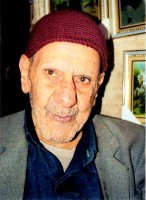
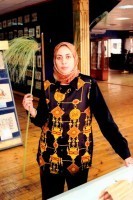
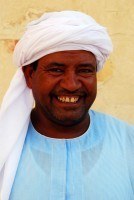
Blog post by Roderick Phillips, author of Weary Heart – a gut-wrenching tale of love and test tubes.
The post Faces of Egypt, Day 279 appeared first on Roderick Phillips.
May 3, 2014
The pyramids of Giza, Day 278
Let me say at the outset that Egypt is a fantastic place to visit. Its history is all around you and incredibly well documented. And to the layman (including myself and Christi) totally incomprehensible. There is a reason Egyptology is its own science and scholars devote their whole careers to unraveling its mysteries. Christi and I prefer to grasp a few simples concepts rather than attempt to take onboard the entire history of pharaonic Egypt during a day tour to the pyramids of Giza.
So here are the few simple impressions I have of the pyramids of Giza. First it truly is surprising how close to Cairo the pyramids are and how urban sprawl continues to edge closer to this the last of the Seven Wonders of the Ancient World. Second, oh my god there are a lot of tourists and a lot of Egyptians trying to sell them something. Some of the tourist trinkets on sale are utter junk and the Egyptian salesmen are by far the most aggressive I have ever encountered. If buying nick-knacks are not your thing then camel rides are available. The pyramids even have their own tourist police, which in theory protect tourists from the excesses of the merchants, the pyramids from the excesses of the tourists and everybody from potential terrorist activities. Still the police do still find time to run their own rackets, including posing with tourists for a backsheesh or tip. After ‘hello’, ’backsheesh’ is the most common word I hear. Once upon a time visitors could climb all over the pyramids, but that practice has been stopped due to the ongoing damage. Third, many of the tourists are Eastern Europeans (particularly Russians) on package tours (something we saw in Tunisia also). These folks dress as if they are at the beach all the time, which is a bit culturally insensitive in a Muslim country such as Egypt. I shouldn’t be at all surprised to learn in the future that Egypt had imposed a dress code on visitors to its cultural sites.
OK, here are a few factoids – and only a few: there are three major pyramids at Giza (and many smaller mausoleums). The two biggest pyramids (in essence burial chambers) were built for Cheops and Chephren. The third belongs to Menkaure. Cheops and Chephren were father and son (the second and third pharaohs of the 4th dynasty of the Old Kingdom, dating to 2530 BC). It is quite remarkable that over 5,000 years ago humans had the technological ability to construct something so big and so complicated as the pyramids. I tend to be of the belief that Ancient Aliens provided the necessary knowledge. Either way, the pyramids were an incredible achievement. And while you can no longer scramble to the top of a pyramid, you can (for an additional fee – and the Egyptian government never misses an opportunity to separate tourists from their cash) visit the burial chambers of bother Cheops and Chephren. We get tickets for Chephren and stumble, hunched over, down a narrow tunnel amid hot and claustrophobic conditions until the trail ascends again quite steeply and opens out into a rather unremarkable burial chamber. The only thing remaining in situ is Chephren’s red granite sarcophagus. As usual there are plenty of tourists present and lots of noise. A religious experience it ain’t, but I did learn something. The pyramids of Giza are solid stone apart from the tunnels and a few chambers in the center of the structure. So as Christi and I are stumbling along there are 4,880,000 tons of stone above our heads, which could you one heck of a headache if it ever collapsed. It probably never will, though – those Ancient Aliens were pretty smart cookies (or little green men).
Another amazing artefact on site is the solar barge built for Cheops to transport him into the afterlife. It is in a remarkable state of preservation and remains in situ – a museum was actually built around it. Simply stunning. The good news is that after paying the entrance fee to see the solar barge the place is virtually deserted. Most likely this is due to the fact that organized tours allow insufficient time to truly explore the entire site, but since Christi and I have once again elected to visit independently we can spend as much time as we want exploring the area (our hired taxi driver gets paid whether he is sleeping in his car or driving us around Cairo). Having said that, too much Egyptology causes my eyes to glaze over so we leave the beautiful barge and walk (through quite ferocious heat incidentally) down hill to the enigmatic sphinx, which is believed to guard the tomb of Chephren. The sphinx has suffered over the years, having lost its nose and beard and from the general effects of weathering. It is also the subject of much discussion. Why is it there? Who built it and when? Does it truly reflect the likeness of Chephren? If only the Ancient Aliens would return to Earth and explain it all to us.
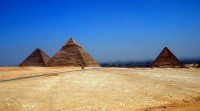
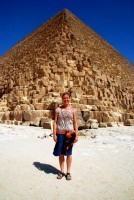
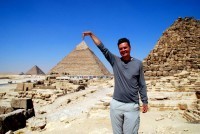
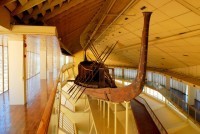
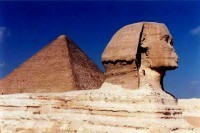
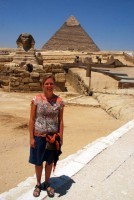
Blog post by Roderick Phillips – author of Weary Heart – a gut-wrenching tale of love and test tubes.
The post The pyramids of Giza, Day 278 appeared first on Roderick Phillips.
May 2, 2014
Monastir, Tunisia, Day 277
A long time ago in a galaxy far, far away. Oh, hang on a minute, I’ve done that one already. Actually, Star Wars was not the only memorable movie to be filmed in Tunisia in the 1970′s. Another iconic – some might say iconoclastic – movie of that era was Monty Python’s Life of Brian. It tells the story of Brian Cohen, a young Jewish man who was born on the same day as Jesus and subsequently mistaken for the Messiah. At the time of its release the movie was considered to be in poor taste if not down right blasphemous by the Establishment. Now it is regarded at one of the best movies ever made, and arguably the best comedy ever made. Classic lines such as ‘He’s not the Messiah, he’s a very naughty boy!’ and songs such as ‘Always look on the bright side of life’ (doesn’t the title alone make you want to whistle?) are just as funny today as they were over 40 years ago.
The film was actually shot at several location within Tunisia, which I’ve omitted in to mention thus far – partly because I was already rather excited by the Star Wars connection (I do get excited easily). However, today is our last day in Tunisia and Monastir (25 miles south-east of Sousse) is our last destination so it’s now or never. We just have enough time for a quick tour of the ribat in Monastir before returning to Tunis for our onward flight to…well we’ll get to that later. As I mentioned filming of the Life of Brian occurred throughout Tunisia. The crucifixion scene was filmed in the hills outside of Matmata (while Christi and I were busy being troglodytes), while the kasbah in Sousse doubled as the city walls of Jerusalem. However, the majority of the film was shot in the ribat in Monastir. Not that I told Christi all this – at least not until our train had reached Monastir station. She gives me her famous eye-roll and then reluctantly accompanies me as I skip out of the station. There are two notable scenes from the movie shot in the ribat (which, incidentally, is the oldest building of its kind in Tunisia dating to the 8th century). The first scene featured Michael Palin as Pontius Pilate, who suffers from rhotacism (an inability to pronounce the letter r). He says to the crowd ‘welease woger‘ followed soon thereafter I should point out by ‘welease wodewick’ (the christian name of yours truly!). The second scene featured Graham Chapman jumping off a tower in the ribat only to be saved by a flying saucer. As usual I’m running around like a giddy schoolboy poking my head into every nook and cranny and trying to imagine myself on the set of the Life of Brian. Christi is my unwilling accomplice tasked with taking endless photos until I deem one of them to be perfect. It’s all so wonderfully magical.
Adjacent to the ribat is the mausoleum of Habib Bourguiba, who was the first president of Tunisia after the country gained independence from France in 1956. He ruled the country for 30 years. The mausoleum is a vast open space dominated by two slender, tall minarets and a central golden dome that houses his tomb, which is all a bit somber after the irreverent humor of Monty Python.
Still there is no time to dwell on such things. We have two trains, a taxi, and then a plane to catch, which now that I think about it does put a little stress in our lives. Fortunately, the Tunisian transport system performs perfectly, however, and we’re back at Tunis airport after a whirlwind 10-day visit.
Our luck does not hold, unfortunately. I purchased two tickets to Cairo on the Tunis Air website a couple of weeks ago and have the computer printouts to prove it. For some reason, though, our names do not appear in the the system when we try to check-in. The staff agree that we have valid electronic tickets, but the airline system failed to issue the tickets. And according to the check-in staff, they don’t have the authority to over-ride the system. We complain to Tunis Air customer services, who refuse to help as does the station manager (the highest ranking paper-pusher available). His only solution is to buy two more tickets and make a claim at a later date. Christi and I are under a time pressure here because they announce that ‘our’ flight to Cairo is boarding. It’s totally outrageous, unfair, and defies logic, but Tunis Air will not budge. I know I’m being screwed, but I eventually pay up and storm off to the gate. Bastards! The 3-hour flight (and + 2 hour time change) is at least smooth, although the food is disgusting. Immigration in Cairo is super easy, but the arsehole of an immigration officer places the Egyptian tourist visa right over my Timbuktu stamp. I am mortified and my mood darkens a little further. I’m certainly not looking on the bright side of life at the moment.
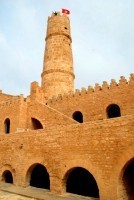
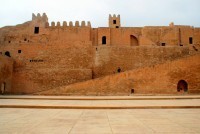
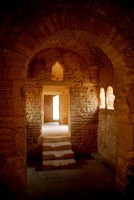
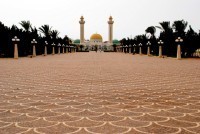
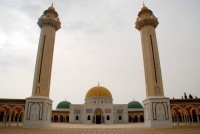
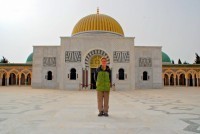
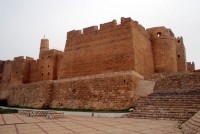
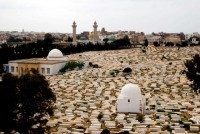
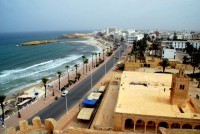
Blog post by Roderick Phillips, author of Weary Heart – a gut-wrenching tale of love and test tubes.
The post Monastir, Tunisia, Day 277 appeared first on Roderick Phillips.
May 1, 2014
El Jem, Tunisia, Day 276
Sousse is a convenient location from which to explore a little more of the surrounding area. And having learned a painful lesson on the bus ride from Houmt Souq to Sousse, Christi and I intend to travel by train from now on. Tomorrow we’re off to visit Monastir, but today its the small town of El Jem, which is home to some of the most impressive Roman remains in Africa, including a coliseum (or amphitheater). It just boggles the mind that such exquisite antiquities can be found in Tunisia. Who knew?
Fortunately it’s only a 60-minute train journey from Sousse to El Jem. Along the way we befriend a couple from Lithuania who are on a week-long package tour to Tunisia. Apparently it is very cheap for Eastern Europeans (Polish, Russian, Lithuanians etc.) to visit North Africa and they are doing do so in their thousands (which partly explains the madness of the ‘Zona Touristique’ on the island of Djerba). And because the economy back home is booming, this Lithuanian couple have also visited Florida on a 2-week fly drive vacation recently and plan to visit California before the end of the year. Both speak excellent English and both are enjoying the new-found freedoms that capitalism brings. I suspect that Christi and I will encounter many more Eastern Europeans as we continue to explore the globe.
The coliseum at El Jem (built on the ancient Roman city of Thysdrus) is the third largest amphitheater in the Roman world after Rome and Capua (a city in southern Italy). It is also easily the largest monument in Roman North Africa, measuring some 148m in length by 122m in width with a perimeter of 427m. It was a massive undertaking since the nearest quarries were more than 30 km away. But at the height of its commercial success in the third century AD (a result of olive oil production, which Rome craved apparently) Thysdrus was a sufficiently prosperous settlement to be able to afford such an extravagant building. Of course then the locals had to find enough Christians to burn and throw to the lions. Life is always full of challenges.
And speaking of those Eastern European package tours, it was quite impressive to see coach after coach roll up to the entrance of the amphitheater, disgorge the tourists for a 33-minute visit (I timed them) and then continue onto the next destination. From a money-making perspective, these highly organized tours appear very lucrative. From the perspective of learning a little about the history and culture of Tunisia…well, I have my doubts. There is probably a reason why Christi and I are not part of a package tour scene. Anyway enough proselytizing otherwise I might as well become a Jehovah’s Witness. In between waves of tourists, Christi and I wander through the maze of arches that comprise the coliseum and up endless flights of steps gazing at the wondrous views the patrons would have had of the gladiatorial contests and Christian sacrifices. Later we visit El Jem’s archaeological museum, which houses numerous beautiful mosaics dating back to Roman times that were excavated here in El Jem. Two lions killing a boar and a mosaic of Rome and its provinces are my favorite. In fact there are several Roman villas in and around El Jem that you can visit, but a sudden downpour sends us scurrying for cover in a nearby restaurant, and this is followed by a lengthy wait on a chilly platform for a train back to Sousse. Perhaps there are some advantages to a package tour after all.
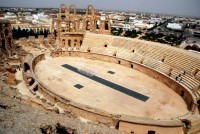
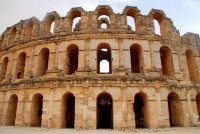
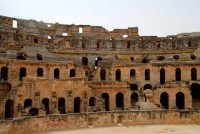
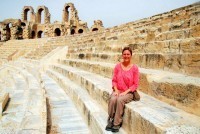
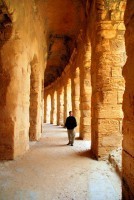
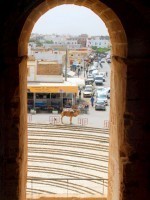
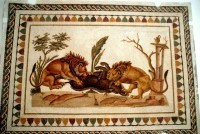
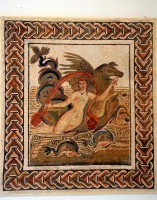
Blog post by Roderick Phillips, author of Weary Heart - a gut-wrenching tale of love and test tubes.
The post El Jem, Tunisia, Day 276 appeared first on Roderick Phillips.
April 30, 2014
Sousse, Tunisia, Day 275
And so our whirlwind tour of Tunisia continues. Christi and I are up at 5am to catch the 6am bus from Houmt Souq to Sousse, some 7 hours to the north back on the mainland. Thus far we have been warned off the Tunisian bus service, the advice being to go by louage. This time, though, we trust ourselves to the national bus line of Tunisia. And it is a truly horrible experience. Some of the seats are broken, most have rips, tears, and armrests missing, and all are dirty and dusty. Fortunately the bus is not full (now I know why) so there is plenty of room for Christi and I to spread out. I’m surprised to see that rather than taking the causeway off the island, we return to Ajim and board a ferry to the mainland. To be fair the bus journey is fast and safe. The Mediterranean Sea pops in and out of view and we again pass huge olive orchard around the town of Sfax. We even arrive in Sousse ahead of schedule and quickly taxi to our hotel for the next 3 nights: the Hotel de Paris, which is located on the edge of the medina. Our room is tiny, but at 22 Dinar (US$15) the price is right.
Sousse has it all: from sandy beaches to a medina that features a 9th century mosque,asbah that houses an elite museum, a ribat (an early fortified mosque built by Muslims during their conquest of North Africa) - and a red light district. Despite all this Christi takes an immediate dislike to the place, describing it as cheap and tacky. I mean how could anyone not be impressed by a Muslim red light district? We begin our cheap and tacky tour at the…ribat (even though this is the cheap and tacky tour, a visit to the red light district is forbidden – by Christi). Built in the early 9th century, the ribat protected the natural harbor and the nearby town of Kairouan (the first Arab capital in North Africa). The ribat is the oldest building in Sousse. It is an imposing fortress, but there’s very little to see inside other than views over the medina (south-west to the hilltop kasbah and south-east over the nearby mosque). The ribat is deserted – so where are all the tourists? I wonder.
A short walk to the southeast brought us to the Grand Mosque and surprisingly us infidels are allowed in. Once again the place is deserted and there is little to disturb our solitude. The Grand Mosque of Sousse is a much more simple and somber affair than the grandiose Hassan II mosque in Casablanca. The Grand Mosque was built to accommodate the growing settlement of Sousse, not all of which could be housed in the ribat. This mosque lacks a minaret to summon the faithful to prayer, but it is believed the tower in the ribat was used for this purpose. We even get a good view of the dimly lit mihrab (prayer niche that faces east towards Mecca).
It just so happens that the route to the kasbah actually passes nearby the red light district, so while Christi is distracted by some persistent merchants in the medina I take a sneak peek. And limited though my experience of red light districts is, I would have to say that the street of a thousand whores is the sorriest, creepiest place I have ever seen. After a brief scolding (truthfully Christi didn’t care, but I just like the word scolded), we hurry on to the kasbah, which is undergoing massive renovations. The only section open (and I’m not entirely sure it is officially open – this could be a private business venture organized by the kasbah gatekeeper) is the main tower. We are ushered inside and the gate closes quickly behind us. The gatekeeper asks for a 3 Dinar donation and directs us to the tower. Christi and I scamper to the top for quite good reviews back over the medina, the ribat, and the mosque. It’s not far off sunset and lights are going on all over town, including a crimson one in the distance that glows a little brighter than the rest.
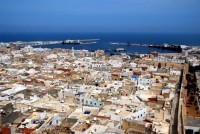
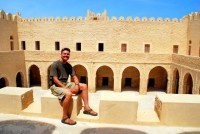
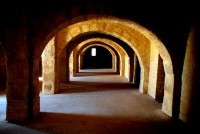
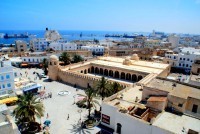
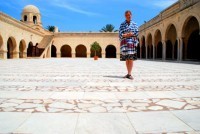
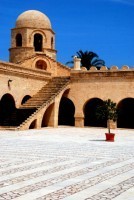
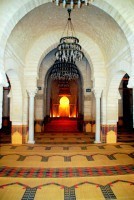
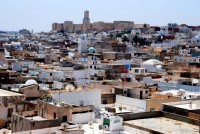

Blog post by Roderick Phillips, author of Weary Heart - a gut-wrenching tale of love and test tubes.
The post Sousse, Tunisia, Day 275 appeared first on Roderick Phillips.
April 29, 2014
Ajim, Djerba, Day 274
With some sketchy notes culled from the Lonely Planet guide and some online detective work, I have a rough idea of the whereabouts of two more Star Wars locations. Whether I find them or not this will by my last Star Wars day. I leave a very happy Christi to upload a huge backlog of photos to Picasa at a fast internet cafe and set off for the town of Ajim.
Ajim is a small fishing port 20 km southwest of Houmt Souq that George Lucas used for a couple of scenes from the original version of Star Wars. As usual the most convenient way to get there is by louage. It’s a 30-minute ride with some very surprised locals. I don’t think Ajim is a popular tourist destination, apart that is from the odd people like myself who are fascinated by Star Wars. And I can’t even tell you why I’m fascinated. It’s not as if I travel the world to visit movie locations, but I do feel a frisson of excitement as we pull into the bus station. Perhaps it’s nostalgia for a more innocent time.
I find the large central roundabout and clock tower in Ajim. My research says turn left and walk 200 yards down a slightly dubious looking alley. As the road opens up there is a classic dome-shaped building. It is rather dilapidated now, disused and unappreciated except for the rare appearance of someone like myself who can reignite its former glory. It’s even possible to see where the Star Wars set builders added an entranceway onto the structure. This location was used to film exterior shots of the Mos Eisley Cantina. Luke Skywalker and Obi-Wan Kenobi enter the cantina in search of passage off the desert planet of Tatooine. In reality, Luke and Ben never entered the building and the interior cantina sequences were filmed at Pinewood studios in London. I receive many curious looks as I photograph the ageing edifice and relive a slice of Star Wars history.
The second Star Wars site is much harder to find. My notes say head west out of town and look for a sign stating ‘Sidi Jemour 10 km to the north’. Follow the track for 700m and the house used for the exterior shots of Ben’s home is on the left. In the movie the backdrop in a dune sea; in reality it is the Mediterranean sea. I actually find the sign fairly easy and the road north runs beside the Mediterranean sea, but the location of the house is 2.5km up the road not 70om. Much like the cantina, the building has been largely abandoned, although local fishermen apparently store equipment there occasionally. Again I’m gripped with a sense of excitement and pride that I managed to find this long-forgotten place; a place that still has an imprint of the Star Wars legend. Maybe in some small way I, too, am now part of that legend.
With a successful mornings exploration accomplished I return via louage to Houmt Souq. I collect Christi from the internet cafe and after a quick lunch in the souq, we taxi to the Zona Touristique. There are literally dozens of hotels all adjacent to one another beside an admittedly pleasant beach. We have ceased to be in Tunisia or Africa, though: poolside bars, loud Western music, topless bathing, and Western food make for a bland vacation experience that could be anywhere, but which is very definitely not Africa. Christi and I walk along the beach for a while past endless sunbathers. For the first time since we arrived in Africa Western tourists are in the majority, but it’s a depressing experience and we do not linger. In a weird way the Mos Eisley Cantina and the Zona Touristique are not that different!
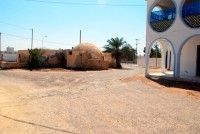
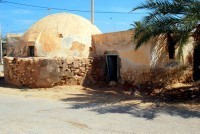

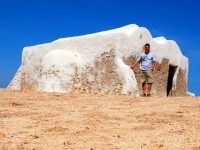
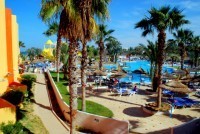
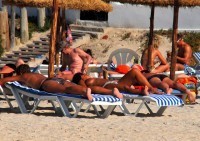
Blog post by Roderick Phillips, author of Weary Heart – a gut-wrenching tale of love and test tubes.
The post Ajim, Djerba, Day 274 appeared first on Roderick Phillips.
April 28, 2014
Houmt Souq, Djerba, Day 273
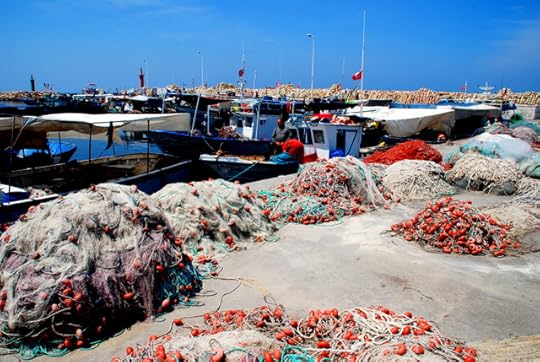 The island of Djerba is the largest island in North Africa, and Houmt Souq is the largest town. The island is connected to the mainland via a causeway that we crossed yesterday and also by ferry from the town of Ajim. Legend has it that Djerba was an island of lotus-eaters, a plant which appears to have narcotic properties, rendering those who ate it relaxed and apathetic. Sounds like they had drug problems even in ancient times, if you ask me. And modern-day Houmt Souq has another problem, European package tourists who come for the sea, sand, sun, and sex, but with little apparent regard for local culture (Tunisia is overwhelmingly Moslem).
The island of Djerba is the largest island in North Africa, and Houmt Souq is the largest town. The island is connected to the mainland via a causeway that we crossed yesterday and also by ferry from the town of Ajim. Legend has it that Djerba was an island of lotus-eaters, a plant which appears to have narcotic properties, rendering those who ate it relaxed and apathetic. Sounds like they had drug problems even in ancient times, if you ask me. And modern-day Houmt Souq has another problem, European package tourists who come for the sea, sand, sun, and sex, but with little apparent regard for local culture (Tunisia is overwhelmingly Moslem).
Our hotel, the nicely appointed hotel des Sables d’Or located in the central souq, is a former funduq – now that is not a word you hear every day. A funduq was a type of lodging catering to both camel caravans (on the first floor), while the merchants took rooms on the floors above. The markets in Houmt Souq are very tourist-focused as stallholders sell every item of tourist junk imaginable. Apparently, though, the souq retains more of its cultural identity than the Zona Touristique further up the coast. Periodically coaches arrive in Houmt Souq from the Zona Touristique and disgorge souvenir-hungry tourists into the markets. Chaos ensues for the next hour and then the tourists return to their hotels in air-conditioned comfort (the air-con, I do miss).
Having started with such a scathing commentary you may be wondering why Christi and I came here in the first place. The truth is the sex, of course. Okay that’s a fib. Actually, I told Christi Djerba would be an idyllic, romantic island. Okay, that’s a fib too. The Lonely Planet guide does paint an attractive picture of the place, though: ‘ethnic diversity’, ‘fascinating architecture’ and ‘great beaches’, which did persuade Christi it was worth spending a few days here. I really wanted to come to Djerba because it is yet another Star Wars hotspot (and the last of my mini-pilgrimage). Before I embark upon that little adventure though, Christi and I explore Houmt Souq harbor and the nearby fort of Borj El Ghazi Mustapha.
The harbor is a bustling, energetic port, where expensive pleasure boats sit cheek by jowl with grimy, dirty fishing boats, further emphasizing the uncomfortable dichotomy of life on the island. Clay pots, used to catch octopi, are stacked against the harbor wall, while mountains of fishing nets dot the port. The harbor also boasts some fine restaurants and we choose one a little off the beaten track called The Little Fisherman. The views (of the port and the fort) and our lunch are both sumptuous: fish soup (Christi) and brik (me) for starters and then we shared a very tasty fish , chips and salad (as did a couple of the local cats).
After lunch we visit the nearby fort, Borj El Ghazi Mustapha. Dating to the 13th Century, the fort (and the island) was long fought over by the Ottomans and the Spanish. Eventually in 1560 the Ottomans won a decisive victory; they celebrated by stacking the skulls of 5-6,000 Spanish dead as a warning against those wishing to oust the Ottomans. The pyramid of death remained in place for almost 300 years, but there is little of menace or interest remaining in the fort today which appears to be in the midst of a massive renovation project.
I hope my search for historical artefacts from the not-so-distant past tomorrow are more successful.
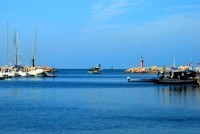
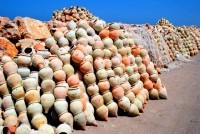
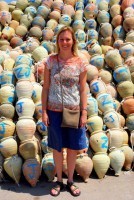
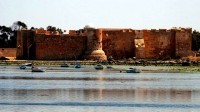
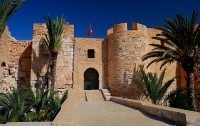
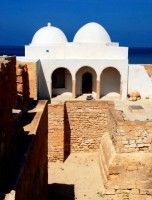
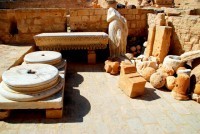
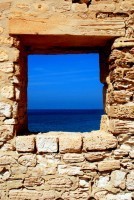
Blog post by Roderick Phillips, author of Weary Heart – a gut-wrenching tale of love and test tubes.
The post Houmt Souq, Djerba, Day 273 appeared first on Roderick Phillips.

